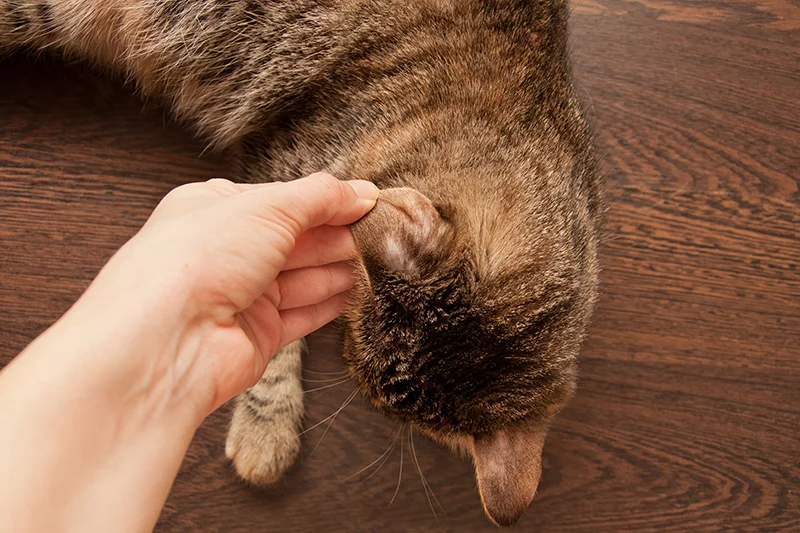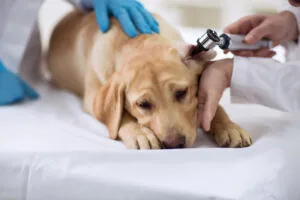Ringworm in Pets: Signs and Treatment for Cats & Dogs
Ringworm in pets is more common than you might think. Despite its name, this condition isn’t caused by worms but by a type of fungi that affects the skin, hair, and nails of both cats and dogs. Left untreated, ringworm can spread not only among pets but also to humans. The good news? With the right knowledge and care, you can protect your furry friends and your family from this itchy and contagious condition.
This article will cover everything you need to know about ringworm in pets, from how it spreads to treatment options and prevention tips. Whether you’re a seasoned pet owner or new to caring for a dog or cat, this guide will help you keep your pets happy and healthy.
What is Ringworm and Why is it a Concern for Pet Owners?
Ringworm is a fungal infection caused by dermatophytes, a group of fungi that thrive on the skin, hair, and nails of animals and humans. Its scientific name, dermatophytosis, may sound intimidating, but understanding it is crucial for any pet owner.
The condition typically manifests as circular, red, or scaly patches on your pet’s skin. The name “ringworm” stems from its characteristic ring-like appearance. While it might be tempting to dismiss it as a harmless rash, ringworm is highly contagious and can cause significant discomfort to your pet. What’s more, it can spread to other pets and humans, making it a condition worth addressing promptly.
How Does Ringworm Spread in Cats and Dogs?
Ringworm spreads through direct contact with the fungal spores. These spores can linger on infected animals, humans, or objects such as bedding, grooming tools, or even furniture. Here’s how it commonly spreads among cats, dogs, and other animals:
- Direct Contact: If your pet comes into contact with an infected animal, they can pick up the infection.
- Contaminated Objects: Fungal spores can survive for months on surfaces like toys, carpets, or brushes, making indirect transmission highly possible.
- Environment: Ringworm spores can even be present in soil, exposing outdoor pets or those who enjoy rolling around outside to the infection.
Understanding how ringworm spreads can help you take steps to minimize your pet’s risk.
Identifying the Signs of Ringworm in Pets
The signs of ringworm in cats and dogs can vary, which sometimes makes it difficult to identify. However, here are some common symptoms to keep an eye on:
- Circular, Scaly Patches on the skin, typically with hair loss in the affected area.
- Itching and Scratching as the infection causes your pet discomfort.
- Brittle or Broken Hairs, particularly in areas where the infection is most visible.
- Redness or Swelling around the infected area.
- Dull and Patchy Coat, especially noticeable in long-haired pets.
- Darkened or Thickened Skin in severe cases.
If you notice these signs, it’s time to take action to confirm whether your pet has ringworm.
How Veterinarians Diagnose Ringworm in Pets
If you suspect ringworm, a visit to your veterinarian is essential. Here’s how vets typically go about diagnosing the condition:
- Physical Examination: The vet will examine your pet’s skin for signs of fungus, such as characteristic lesions or hair loss.
- Wood’s Lamp Test: A special ultraviolet light is used to check for glowing, yellow-green fluorescence, which is a tell-tale sign of some types of ringworm.
- Fungal Culture: Hairs or skin samples may be collected and cultured in a lab to confirm the presence of dermatophytes.
- Microscopic Examination: The vet may also examine the collected samples under a microscope for fungal spores.
A professional diagnosis ensures your pet gets the most effective treatment.
Treatment Options for Cats and Dogs
The good news is that ringworm in pets is treatable. Depending on the severity of the infection, your vet might recommend one or a combination of the following:
1. Topical Treatments
- Antifungal creams, ointments, or shampoos are commonly used to treat localized infections.
- Shampoos or lime sulfur dips may be recommended for pets with widespread issues.
2. Oral Medications
- For moderate to severe cases, oral antifungal drugs like itraconazole or terbinafine are often prescribed to attack the infection from the inside out.
- These medications require a prescription and proper veterinary guidance.
3. Environmental Cleaning
- Cleaning and disinfecting your pet’s environment is crucial for preventing reinfection. Use a bleach solution to disinfect surfaces and wash bedding and toys thoroughly.
Following your vet’s instructions closely is key to ensuring a successful recovery.
Practical Tips to Prevent Ringworm in Pets
Prevention is always better than cure. Here are some actionable tips to minimize the risk of ringworm in your household:
- Maintain Cleanliness: Regularly wash your pet’s bedding, toys, and grooming tools to eliminate fungal spores.
- Limit Contact: Avoid exposing your pet to infected animals or environments where ringworm is prevalent.
- Ensure Proper Hygiene: Wash your hands after handling your pet to reduce the risk of spreading spores.
- Regular Grooming: Groom your pets frequently to keep their skin and coat healthy.
- See a Vet for Skin Issues: If you notice any unusual skin problems, consult your vet promptly to address potential infections early.
By practicing these habits, you can significantly reduce the chances of ringworm affecting your pets or family.
Dispelling Common Myths About Ringworm
There are plenty of misconceptions surrounding ringworm. Here are a few myths and the truths behind them:
- Myth: Ringworm is caused by worms.
Truth: Ringworm is a fungal infection and has nothing to do with worms.
- Myth: Only stray or neglected animals get ringworm.
Truth: Even the most pampered pets can contract ringworm.
- Myth: You can’t catch ringworm from your pet.
Truth: Ringworm is zoonotic, meaning it can transfer between humans and animals.
Understanding the facts equips you to better address the infection.
Recognizing When to Consult a Vet
If you notice persistent itching, hair loss, or any suspicious lesions on your pet’s skin, it’s time to consult a vet. Ringworm can worsen without treatment, causing discomfort for your pet and posing a risk to other animals and humans.
Professional consultation can also rule out other skin conditions that mimic ringworm, like mange or allergies.
Supporting Your Pet During Ringworm Treatment
While undergoing treatment, your pet may need extra care:
- Isolate the Infected Pet: Keep them separate from other pets to avoid spreading the infection.
- Administer Medications as Prescribed: Follow your vet’s treatment plan strictly for optimal results.
- Monitor Progress: Keep an eye on your pet’s skin, noting any improvements or new symptoms.
- Maintain a Clean Environment: Continue disinfecting all areas and items your pet interacts with.
With patience and care, your pet will be on the road to recovery in no time.
Early Detection of Ringworm in Pets Saves the Day
Ringworm in pets can be a stressful experience for both you and your furry companions, but early detection and effective treatment make all the difference. By staying vigilant, practicing good hygiene, and consulting your vet promptly, you can safeguard both your pets’ health and your household.
Remember, you’re not alone in this. Veterinarians and pet care professionals are here to guide you every step of the way. Together, you can ensure your pets lead happy, itch-free lives.
Share This Post
Recent Posts
About Shallowford Animal Hospital
Shallowford Animal Hospital and The Pet Spa at Shallowford are dedicated to the exceptional, compassionate care your pet deserves. Pets hold a very special place in our families, and we treat yours like our own.




